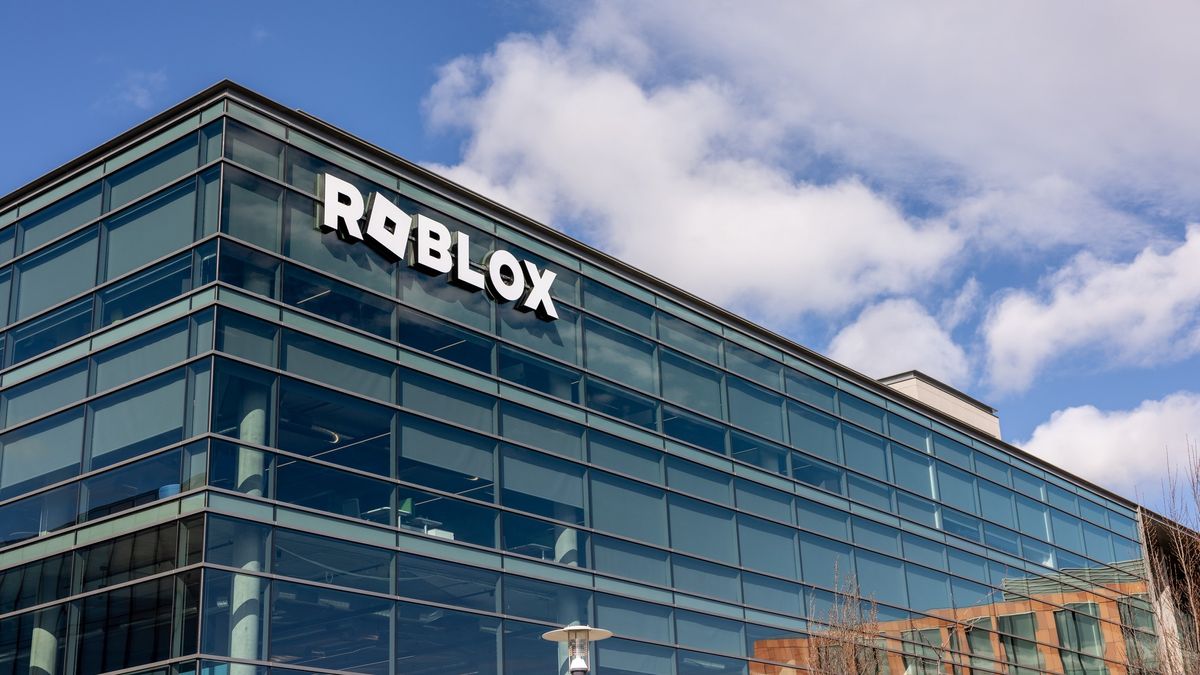The Roblox Developers Conference is underway, and at the keynote address CEO and co-founder David Baszucki unveiled a modest goal: one billion daily active users, and 10% of all gaming content revenue worldwide happening within Roblox. To give that first target some context, estimates vary but the United Nations reckons the global population was just over eight billion people as of November 2022.
All you can really say is good luck because, while Roblox’s numbers are as impressive as they get, the platform as it stands is nowhere close to this scale. It boasts 79.5 million daily active users, nothing to be sniffed at for sure, but getting from here to one billion seems Quixotic at best. The first thing Baszucki wants to take aim at, however, is the idea that all these users are young children.
“Of the 79.5 million users who come to Roblox daily, 58% are aged 13 or older,” says Baszucki, though perhaps a more telling stat would’ve been the percentage over 18. “When Erik Cassel and I founded Roblox in 2006, we were motivated by a question that still drives the company today: How do humans connect through play?”
Baszucki goes on to talk about how Roblox connects people, before getting to the industry’s scale and that headline claim. “The gaming market is huge: 3.4 billion people play games, and the gaming industry generates more than $180 billion in annual revenue,” says Baszucki. “As our next stepping stone on our way to one billion daily active users, we are sharing an ambitious goal: We believe that 10% of all gaming content revenue worldwide will flow through the Roblox ecosystem and be distributed within our Roblox community.
“On our way to 10% of gaming content revenue, we believe we will reach approximately 300 million daily active users. We believe that about 80% of those people will come to Roblox to play together, with the rest coming to shop, consume entertainment, learn, or simply communicate with one another.”
Ookay. I’m not quite sure why Baszucki floats the one billion goal then dials it down to 300 million daily users afterwards: which is still one hell of a goal. Maybe it’s just a case of long-term aspirations versus medium term reality, but one billion people is such a crazy number I’m surprised Baszucki didn’t give a little more insight into why Roblox thinks that might be achievable (if indeed it does, and this isn’t just about getting investors rubbing their trousers).
Roblox announced some new tools at RDC that it believes will help it turbo-boost those user numbers. First is Party, which lets Roblox friends group up, communicate, and move around experiences (the platform’s designation for the games it hosts), with voice chat limited to those 13 years and older. Party will also automatically ensure friends matchmake onto the same server, and will be fully rolled out by the end of the year.
Another major push is music, with a “What’s Playing” feature allowing users across the platform to find popular and trending songs and any associated experiences. Roblox has also had an idea for something it calls “Music Charts”, launching in 2025, which does make me slightly miss Top of the Pops.
Further to this there’s a partnership with DistroKid, a music distribution service, which will make it easier for artists to officially upload their music to Roblox, and for creators to use the tracks. Baszucki says this is all “part of our vision” that Roblox becomes “a destination for organic and immersive music discovery.” Now I’m missing MTV.
It’s easy enough for non-players to scoff at Roblox, but these announcements are going to make a major difference to creators, players, and presumably music artists who want their tunes exposed to a potentially massive audience. Roblox isn’t even reinventing the wheel in how it’s going to do it: charts, community, and whatever the successor to the music video is.
There are also various changes coming to what types of businesses creators can run on Roblox, and how they can price premium experiences worldwide. Eligible creators will now be able to sell merchandise from within experiences, with the feature launching in early 2025 and the first commercial partner being Shopify. Further to this, creators will be able to price access to their experiences in “real currency value” (revenue share: 50-70% depending on price point), and a price optimisation tool that helps creators judge the sweet spot. Yep: these kids are going to get squeezed until the pips squeak.
Shortly after this Roblox is launching regional pricing recommendations, and allowing creators to vary prices by region, which is apparently all about building “a virtual economy that is more globally inclusive and accessible.”
Roblox now has serious cultural penetration (see for example the BBC explaining the UK’s general election to young Brits via Roblox), but this scale has also brought increased scrutiny on both its commercial practices and the platform’s safety for young users. For its part, Roblox studio head Stefano Corazza denies the company and its revenue sharing model is a contemporary equivalent of “child labour”, countering that “we are offering people anywhere in the world the capability to get a job.” This argument doesn’t seem to carry much weight with the Turkish government, however, which has just straight-up banned Roblox for alleged “child exploitation.”
That remains the wider context around Roblox’s future, as its scale and power inexorably grow, and the revenue sharing and safety issues in particular feel like they will run and run. At the very least, it’s the kind of thing that might crimp your ability to attract a billion folks daily.
Many of the features announced at RDC will already be somewhat familiar to Roblox users, albeit in more limited forms. Walmart has been selling real-world items on there since early this year, while you can already apply for a job in the Roblox version of IKEA (and serve virtual meatballs). Plenty of artists already use Roblox to promote their music, and hold concerts. The company’s previously boasted about the pie-in-the-sky AI that’ll create everything for you. All of these features slot into what Roblox is already doing well.
Targeting one billion daily users seems like madness but other than that, for Roblox, it’s pretty much business as usual. And business is very, very good.









